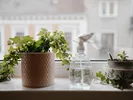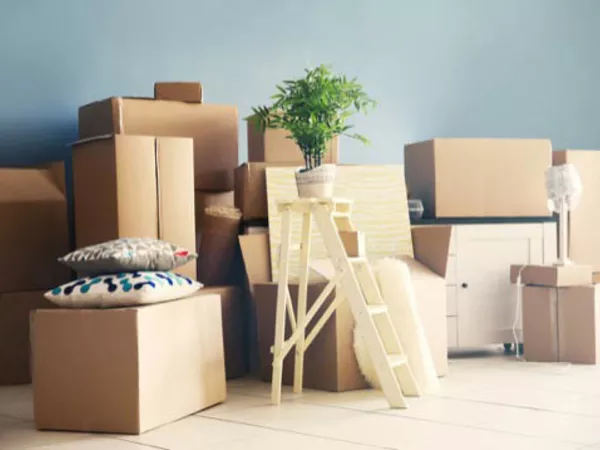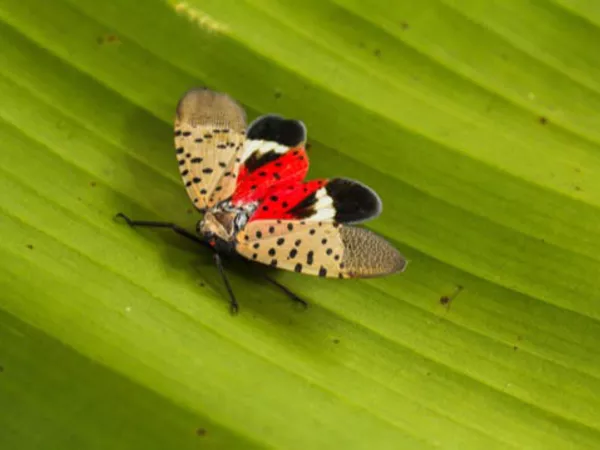By continuing to use this site, you agree to our use of cookies.
How do you move houseplants from one state to another?
Oct 19, 2023
Moving plants: Keeping your green thumb during out-of-state moves
Whether you’ve nurtured a collection for years or you’re new to plant parenting, keeping them alive and flourishing is the ultimate goal for any gardener. These pieces of nature add beauty and tranquility to a home, so it’s only natural to want to bring them along when moving to a new state.
U-Pack® can move household belongings long distance, but like most moving services, perishable things like plants are on our do not ship list. Fortunately, greenery can safely travel with you or ship with a parcel service when you know the correct steps to protect it.

How to move plants in 6 steps
Follow these steps to keep houseplants in tip-top shape during a move.
1. Research state regulations for importing plants
Each state will have different rules for importing plants, and some are stricter than others. The regulations are in place to protect local vegetation from disease or pests. The National Plant Board website offers easy access to every state’s laws.
Note: When driving with plants, don’t forget to check the laws for any states you’ll travel through.
2. Consider the new climate
Before moving a plant, it’s important to ensure it will thrive in a new environment. Most indoor varieties will work in different areas, but some could be affected by humidity or altitude changes. Check with a local nursery for more information about your specific collection.
If you have outdoor plants, make sure to consider the new climate, especially factors like rainfall, humidity and average temperatures. For example, potted tropical flowers from the porch in Florida might not fare well in Minnesota. Consult the U.S. Department of Agriculture’s plant hardiness maps to learn what grows best in each region.
What if the new area isn’t ideal? If houseplants are unlikely to survive (or aren’t allowed) at your new home, consider gifting them to friends and neighbors or donating them to a local nursing home or rehabilitation facility.
3. Plan how to transport the plants
You have three main options for transporting live vegetation — it can travel in a car, fly with you on a plane, or be shipped.
Driving plants across state lines
Putting plants in a personal vehicle is usually the easiest way to move them. Keeping the collection inside the car’s cabin (if you have room) or securing it in the trunk allows you to care for everything as you travel. Cover the containers to protect them — too much sunlight through the car’s windows can scorch the leaves. It’s also helpful to bring the boxes inside when stopping overnight to protect foliage from extreme temperatures.
Bringing plants on a plane
According to TSA regulations, plants can be checked or transported as carry-on packages. Keep in mind that most airlines have limits for carry-ons and charge for checked baggage. Reach out to the airline for specific rules, size limits and fees.
Shipping live plants with a parcel service
If you’re unable to travel with houseplants, USPS®, UPS® and FedEx® will ship them, but you’ll need to check with the preferred company about specific guidelines. When shipping perishables, it’s best to use the fastest service possible and be mindful of weekends or holidays that could cause delays.
4. Prepare houseplants for travel
Once you’ve confirmed you can (and should) bring the plants along, it’s time to get them ready for travel.
-
Prune — trim and remove dead leaves to promote new growth.
-
Repot — replace the soil and move plants to plastic pots (rather than ceramic or clay).
-
Inspect — look for signs of disease or bugs and treat or discard any affected plants. Complete a final inspection before the move. Don’t forget to check the soil for any hidden critters!
-
Water — Keep plants properly hydrated leading up to the move and give a final watering two or three days before travel. Avoid overwatering to prevent root rot during transit.
What if you can’t bring the whole thing? Consider bringing a clipping or small rooted portion if the plant is outdoors or too large to transport. For best results, use paper towels or newspaper to keep the ends or root ball damp during transit. You could also use a plastic stem holder (available online or from a florist) to protect the ends.
Note: A USDA Agriculture Center can help with procedures and paperwork if the new state requires a certified inspection for pests.
5. Learn how to pack plants for moving
No matter how you’re transporting your greenery, using sturdy and well-ventilated containers is essential to keep everything safe and secure. Cardboard boxes usually work best for airflow since plastic containers might trap moisture.
Reinforce the boxes
Tape the bottoms of the boxes at all seams and reinforce them to hold heavy items. If you’re worried about moisture, line the box with a trash bag or part of a disposable painting tarp.
Prep and secure the pots
Cover the soil with newspaper or packing paper and secure it with tape to keep the contents in place. Wrap cardboard or heavy paper around the top of the pot to protect delicate leaves. Wooden skewers stuck into the soil are also helpful to keep foliage from getting crushed.
Tape or cover the drainage holes with a trash bag and place the plastic pots inside the box. Use materials like newspaper, packing peanuts or Bubble Wrap® to keep anything from shifting.
Seal and label the containers
Put the plant names and care instructions inside each box. Then, close the packages and give them a test shake to make sure everything is secure before sealing with packing tape. When driving, it’s okay to skip taping the tops of the boxes and just fold them closed.
Label each package with “Fragile” and “Live Plant”. Indicate the correct orientation of the box to keep it upright during transit.
Any ceramic and clay pots removed during repotting should be packed separately. Check out our packing tips to keep everything safe.
6. Unpack and let plants acclimate
As soon as you arrive at the new location, unpack houseplants as quickly as possible so they can begin acclimating to their new environment. Water the plants and keep a close eye on them as they adjust. It can take time for greenery to get used to a new place, so it might be best to wait a few weeks before repotting again. Consult a nursery for specific instructions if you’re unsure.
Need a way to move everything else?
Now you know how to move houseplants, but do you have a plan for moving other household belongings? That’s where U-Pack can help! We’re a self-moving service with more than 25 years of experience in long-distance moves. Get a free, no-obligation online quote today or call 844-362-5303844-594-3077 to speak to a moving consultant.
If you have questions about moving plants or how U-Pack works, let us know in the comments. We’re always happy to help!
More articles you might like...



